


GEORGES BIZET 1838 -
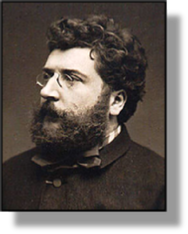 xxxxxThe French composer Georges Bizet produced his opera Carmen at the Opéra Comique, Paris, in March 1875. A Spanish tale of fire and passion, and with a wealth of powerful melodies, it has become one of the best loved and most frequently performed operas in the world. Sadly, he was taken ill just three months after the first performance and died without having any idea as to the success his masterpiece was to achieve. His other works included the operas The Pearl Fishers and the Fair Maid of Perth, together with orchestral and choral music, piano pieces, and over thirty-
xxxxxThe French composer Georges Bizet produced his opera Carmen at the Opéra Comique, Paris, in March 1875. A Spanish tale of fire and passion, and with a wealth of powerful melodies, it has become one of the best loved and most frequently performed operas in the world. Sadly, he was taken ill just three months after the first performance and died without having any idea as to the success his masterpiece was to achieve. His other works included the operas The Pearl Fishers and the Fair Maid of Perth, together with orchestral and choral music, piano pieces, and over thirty-
xxxxxBizet was born in Paris. His father was a singing instructor, and his mother an accomplished pianist. His father gave him his first music lessons, and from an early age he showed a remarkable talent. He entered the Paris Conservatory at the age of nine where his teachers included the French composers Charles Gounod and Jacques Halévy (whose daughter, Geneviève, he later married). Apart from a number of awards for his course work, in 1857 he shared a prize sponsored by the French composer Jacques Offenbach, and then won the coveted Prix de Rome with his cantata Clovis et Clotilde. He spent three years in Rome and it was during that time that he became afflicted with a severe throat infection -

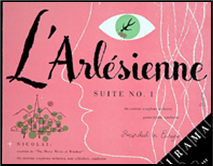 xxxxxOn his return to Paris in July 1860 -
xxxxxOn his return to Paris in July 1860 -
xxxxxThe Franco-
 xxxxxFinally in March 1875 came what proved to be his masterpiece, the opera Carmen, based on the short novel of that name by the French writer Prosper Mérimée. At first the splendour and savage realism of this work, rich in colour, melody and passion, and brought to life by brilliant orchestration, failed to impress its audiences and its critics. Considered “immoral” and “superficial” it received just 37 performances. It was only after his death in June 1875 that Carmen gradually gained in favour. Much admired by his contemporaries Debussy and Tchaikovsky, it was destined to become one of the most popular operas in musical history. But Bizet, struck down by a heart attack at the age of 37, died a disappointed man. All his life he had striven to gain recognition as a composer of opera, and when it came it came too late.
xxxxxFinally in March 1875 came what proved to be his masterpiece, the opera Carmen, based on the short novel of that name by the French writer Prosper Mérimée. At first the splendour and savage realism of this work, rich in colour, melody and passion, and brought to life by brilliant orchestration, failed to impress its audiences and its critics. Considered “immoral” and “superficial” it received just 37 performances. It was only after his death in June 1875 that Carmen gradually gained in favour. Much admired by his contemporaries Debussy and Tchaikovsky, it was destined to become one of the most popular operas in musical history. But Bizet, struck down by a heart attack at the age of 37, died a disappointed man. All his life he had striven to gain recognition as a composer of opera, and when it came it came too late.
xxxxxIncidentally, Bizet’s first Symphony in C Major was composed in 1855 when he was 17, but it was never heard in his lifetime. Probably written as a course assignment, it was discovered in 1933 in the archives of the Conservatory Library, and was given its first public performance two years later. A delightful work, it has come to be regarded as a junior masterpiece. ……
xxxxx…… Likewise, his opera Ivan IV, composed in 1865 and rejected, so it seems, by the Théatre Lyrique, never came to light until discovered in 1944. Much amended and renamed Ivan le Terrible, it was first performed in 1946. ……
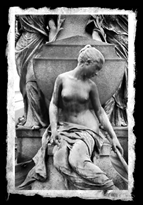
xxxxx…… Bizetxwas buried in the Père Lachaise Cemetery in Paris, the largest burial ground in the city. Named after Père François de la Chaise (1624-
Including:
Alphonse Daudet

xxxxxApart from three years spent in Rome as a student, the French composer Georges Bizet lived all his life in or around Paris. Although a brilliant musician, he failed to gain recognition as a composer of opera, though his masterpiece Carmen, a Spanish tale of fire and passion, produced in 1875, gained fame soon after his death. Today, this opera, based on a novel of the same name by the French writer Prosper Mérimée, is one of the most popular operatic works in the world. Two earlier operas, The Pearl Fishers of 1863 and the Fair Maid of Perth of 1867, also met with limited success during his life time, and a number of others were rejected or discarded. He also wrote orchestral and choral music, piano pieces and over 35 songs. Included in these works were the Jeux d’enfants, 12 children’s games for piano duet, the incidental music for Alphonse Daudet’s drama L’Arlésienne (The Lady from Arles), and his second Symphony in C Major entitled Roma. He suffered from ill-
Acknowledgements
Bizet: by the French photographer Étienne Carjat (1828-
Vb-
xxxxxAs we have seen, it was in 1872 that Georges Bizet composed the incidental music for L’Arlesienne (The Lady from Arles), a tragic love story by the French dramatist, novelist and storyteller Alphonse Daudet (1840-
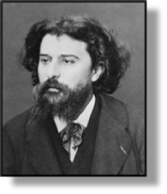 xxxxxAs we have seen, it was in 1872 that Georges Bizet composed the incidental music for L’Arlésienne (The Lady from Arles), a tragic love story by the French dramatist, novelist and story-
xxxxxAs we have seen, it was in 1872 that Georges Bizet composed the incidental music for L’Arlésienne (The Lady from Arles), a tragic love story by the French dramatist, novelist and story-
 xxxxxDaudet was born into a bourgeois family in the city of Nimes. It would seem that his schooldays, spent in Lyons, were far from happy, and that his first job, an assistant teaching post in Alès, ended in failure. At the end of 1857 he settled in Paris, supported by his older brother Ernest, and it was here that he took up journalism and came to be known in literary circles. In 1858 his first work, a small volume of verse entitled Les Amoureuses (The Lovers), was fairly well received, and this was followed by his first attempts at stage production, but it was not until 1869 with the publication of his Letters from my Mill, that recognition came on a wider scale. Comprised of fourteen charming short stories, written in the first person, and supposedly produced while living in a windmill in Fontvieille, Provence, they described colourful characters and whimsical events far removed from the hustle and bustle of life in the capital. As a result they entranced Parisiens and delighted southerners. Notable among these gentle, humorous tales were The Three Low Masses, the Elixir of Father Gaucher, and the Secret of Master Conrille.
xxxxxDaudet was born into a bourgeois family in the city of Nimes. It would seem that his schooldays, spent in Lyons, were far from happy, and that his first job, an assistant teaching post in Alès, ended in failure. At the end of 1857 he settled in Paris, supported by his older brother Ernest, and it was here that he took up journalism and came to be known in literary circles. In 1858 his first work, a small volume of verse entitled Les Amoureuses (The Lovers), was fairly well received, and this was followed by his first attempts at stage production, but it was not until 1869 with the publication of his Letters from my Mill, that recognition came on a wider scale. Comprised of fourteen charming short stories, written in the first person, and supposedly produced while living in a windmill in Fontvieille, Provence, they described colourful characters and whimsical events far removed from the hustle and bustle of life in the capital. As a result they entranced Parisiens and delighted southerners. Notable among these gentle, humorous tales were The Three Low Masses, the Elixir of Father Gaucher, and the Secret of Master Conrille.
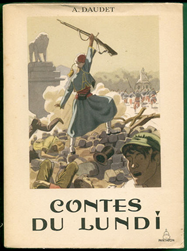 xxxxxA year earlier, 1868, had seen the publication of his semi-
xxxxxA year earlier, 1868, had seen the publication of his semi-
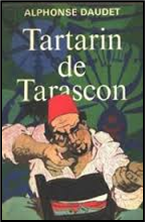
xxxxxThe war over, in 1872 Daudet produced the character Tartarin, featured in three short stories which rank among the most delightful works of humour in the French language -
xxxxxIn 1874 Daudet produced Fromont jeune et Risler ainé (Fromont the Younger and Risler the Elder). A realistic story, noted for its admirable characterisation, it was well received, and launched him on a series of successful novels about troubled relationships in modern French life. Often writing for eighteen hours a day, he produced a dozen or more works over the next fifteen years. These included Jack, about an illegitimate boy; Le Nabab, based on the Duc de Morny (for whom he worked in the 1860s), L’Évangéliste, concerned with religious fanaticism, and Sapho, about a turbulent love affair with a former mistress.
xxxxxHis memoirs are contained in two volumes entitled Souvenirs d'un homme de lettres (Reminiscences of a Man of Letters) and Trente ans de Paris (Thirty Years in Paris), completed in 1888. L’Immortel, published the same year, contains a bitter attack on the French Academy -
xxxxxDaudet had many friends. Among these were Gustave Flaubert, Émile Zola and Edmond de Goncourt, “naturalists” like him, who took their material from the events they lived through and the people they knew. He was capable of a charming style full of light and colour -
xxxxxIn his final years Daudet suffered from severe spinal pain -
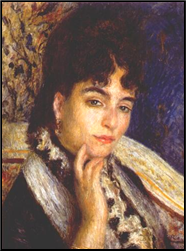
xxxxxIncidentally, because the title character never appears in the play, “L’Arlésienne” is often used in France to describe a person who is always absent from the place you would expect to find him or her. ……
xxxxx…… Daudet married Julia Allard in 1867 and the marriage was a happy one. They had two sons and a daughter. Madame Alphonse Daudet also possessed literary talent, and is best known for two works, Impressions de nature et d'art of 1879, and L'Enfance d'une Parisienne, published in 1883. This portrait of her is by the French artist Pierre-


